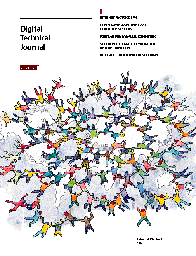
Jane C. Blake
Managing Editor
This issue presents papers on diverse computing topics --- the
Internet, modern Fortran language extensions for parallel
computing, and performance measurement of AlphaServer 64-bit RISC
systems --- each representing an area of engineering strength for
Digital. Also in the issue is a thought-provoking paper on the preservation of
historical computers.
The opening paper on the Internet Protocol version 6 examines
the status of today’s Internet and looks toward its future.
Digital is one of several companies participating in the working
groups of the Internet Engineering Task Force on the transition
to a new protocol. Dan Harrington, Jim Bound, Jack McCann, and
Matt Thomas report what they have learned from designing an IPv6
prototype, and compare and contrast the new version with the
existing protocol, IPv4. The most important difference between
the versions --- one that will relieve the strain on the Internet
--- is the increase in IPv6 of address size from 32 bits to 128
bits. The authors conclude with a look at future work in such
areas as security and data link interfaces for ATM.
Our next paper --- an unusual one not only for the issue but
for this Journal --- temporarily moves the discussion from
computing’s future to its past. Max Burnet and Bob Supnik
argue that an understanding of computing’s past is vital to
its future. The authors present two computer preservation
techniques: restoration and simulation. To exemplify issues in
restoration, they review the status of a project to restore a
large UNIBUS-based PDP-11 system. The section on simulation describes
the types and purposes of simulators and presents a case study of
SIM, a simulator implemented in C for the study of historical
computer architectures.
In a paper on modern Fortran, Bill Celmaster demonstrates that
today’s Fortran is a viable mainstream language for parallel
computing. Since its development more than 40 years ago, Fortran
has been extended by language designers to meet the needs of users,
particularly the needs of scientific/technical users who require
mathematical expressivity and code optimization. Bill reviews key
features of Fortran 90, recent efforts to standardize parallel
extensions to Fortran, and shared-memory parallelism. He includes
three case studies that illustrate the data parallel and single-program--multiple-data
styles of programming.
Two papers describe testing methodologies that resulted in
leadership system performance under the TPC-C benchmark for a
cluster system and for a single-node system. The first paper
presents the evaluation of an AlphaServer 8400 5/350 TruCluster
configuration supporting the Oracle Parallel Server database.
Judy Piantedosi, Archana Sathaye, and John Shakshober discuss the
system tuning and the record-setting results of their work. The
second paper, by Tareef Kawaf, John Shakshober, and Dave Stanley,
looks at two optimization techniques --- locking intrinsics and
OM profile-based optimization --- applied to a large database program running
in the very large memory (VLM) environment on an AlphaServer 8400 system.
The results of these optimizations are significant increases in throughput
and database-cache hit ratios.
The development of AltaVista Forum is the subject of our final
paper. Unlike other groupware products, AltaVista Forum uses the
World Wide Web as infrastructure to facilitate the rapid
development of collaboration applications for NT and UNIX systems.
Dah Ming Chiu and Dave Griffin explain this design decision and
share their experiences with usability studies, an interpretive
language (Tcl) for building the tool kit, and the inclusion of an
indexing and search engine.
The next issue of the Journal, volume 8
number 4, will feature the new AlphaServer 4100 high-performance midrange
server system, a new implementation of MEMORY CHANNEL,
and large-database technologies in the VLM environment.
|